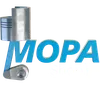NAMEPLATE signs and markings for marine and diesel engines
Signs and markings form a critical component group around every engine: durable NAMEPLATEs, safety decals, rotation arrows, system flow labels, valve tags, and instruction placards. Together they identify the machine, communicate operating limits, guide daily routines, and support safe, compliant service. On marine engine installations as well as power generation sets, these elements are engineered to withstand heat, vibration, oil, coolant, salt spray, and routine cleaning—while staying readable for years.
For purchasers and technical managers, high-quality signs and markings are more than accessories. They underpin traceability, compliance with rules and standards, and the correct selection of consumables and spare parts. Clear labelling prevents setup errors, shortens maintenance time, and helps crews align procedures across shifts and ports. When a NAMEPLATE and associated labels are complete and legible, the engine’s lifecycle data remains accessible and the asset can be serviced with confidence.
Technical function of NAMEPLATE signs and markings in a marine or diesel engine
A NAMEPLATE marine engine identification plate consolidates core data: manufacturer, model and variant, serial number, rated power and speed, fuel type, emissions tier, build list or bill-of-material index, and often a QR/2D code that links to configuration and parts catalogs. On a NAMEPLATE diesel engine, this data is the single source of truth for service procedures, calibration values, and the exact match of OEM parts.
Beyond the NAMEPLATE, system markings provide actionable, at-a-glance information where it matters. Fuel, lube oil, and coolant circuits are labelled for flow direction; filter heads carry change-out intervals and differential pressure limits; charge-air piping and turbochargers receive temperature warnings; rotating components show direction arrows to prevent coupling mistakes; and emergency shutdown devices are identified for drills and real incidents. Safety placards use standardized pictograms to indicate hot surfaces, high pressure, noise exposure, or confined-space hazards. In aggregate, signs and markings reduce ambiguity, shorten troubleshooting, and guard against procedures that would otherwise degrade performance or create safety risks.
The technical design of these components is specific: photo-etched stainless NAMEPLATEs for high-temperature zones; anodized aluminum for low weight and corrosion resistance; polycarbonate and polyester decals with UV-stable inks; laser-engraved laminates for chemical resilience; and high-tack acrylic adhesives or mechanical fixation (rivets, screws) for long-term retention under vibration. Contrast ratios, font sizes, and iconography follow industry conventions to ensure readability in low light and under contamination.
- · Durable metals and engineering plastics built for heat, vibration, and salt-laden air.
- · High-contrast, UV- and solvent-resistant print for long-term legibility.
- · Laser-etched or photo-etched NAMEPLATE options for permanent identification.
- · Adhesive systems rated for oils, coolants, and continuous temperature exposure.
- · Clear rotation arrows, flow indicators, and standardized safety pictograms.
- · Serial, model, and rating data that drive correct selection of OEM parts.
- · Optional QR/2D codes for digital manuals, service histories, and parts lookup.
- · Rivet/screw or tamper-evident mounting for secure attachment.
Why signs and markings are vital for reliable engine operation
Reliability starts with accurate identification and clear instructions at the point of work. When signs and markings are intact, crews can confirm the engine variant before ordering spares, apply the right torque and fluid grades, and follow the correct isolation and commissioning steps. This supports fuel efficiency, emission compliance, and component longevity.
If labels fade, detach, or are missing, the risks escalate quickly: wrong filters or seals may be installed; coolant concentration might be set outside spec; rotation could be established incorrectly after a coupling job; or an emergency stop might be delayed because the actuator is not clearly identified. The outcome ranges from unplanned downtime and oil leaks to turbocharger damage or non-compliance findings during class or port inspections. In short, poor signage creates avoidable faults and costs that compound across the engine’s service life.
Advantages of OEM spare parts suitable for signs and markings
Using OEM spare parts suitable for signs and markings ensures the exact match of materials, dimensions, adhesives, and wording to the engine build. A NAMEPLATE OEM parts set will carry the precise model code, rating plate information, and safety statements approved for that configuration, avoiding confusion and rework.
Performance and reliability benefit because the plates and decals are engineered for the engine’s thermal envelope and chemical environment, preserving legibility over thousands of operating hours. Budget control improves through longer service intervals for signage, reduced inspection remarks, and fewer repeat jobs caused by mislabelled systems. Service life of the engine is supported by preventing procedural errors—correctly marked filters, vents, drains, and rotation arrows reduce wear mechanisms and protect major assets.
In addition, OEM spare parts suitable for signs and markings maintain consistent iconography and terminology across fleets. That consistency accelerates training, reduces language barriers on international crews, and streamlines audits by surveyors and internal HSE teams.
MOPA: experienced partner for NAMEPLATE signs and markings
MOPA supplies OEM spare parts for NAMEPLATEs, safety decals, and technical markings across diesel and gas engines. As a reliable partner, MOPA focuses on speed, quality, and security in the trade of OEM parts, supporting shipowners, power plant operators, and service companies worldwide. From a single NAMEPLATE for a marine engine to a complete engine-room signage kit, MOPA aligns deliveries with your serial number and build list to ensure an exact fit.
Speed, quality, and security for OEM parts
With fast quotation and dispatch, batch traceability, and documentation aligned to your equipment ID, MOPA reduces downtime and simplifies compliance checks. Quality-controlled sourcing ensures materials, adhesives, and print methods match the required specification. Secure packing and global logistics safeguard plates and decals from damage so they arrive ready to install.
Conclusion: NAMEPLATE signs and markings sustain performance
NAMEPLATE signs and markings are small components with outsized impact: they anchor identification, guide safe procedures, and protect efficiency throughout the engine’s life. Selecting OEM spare parts suitable for signs and markings preserves legibility, consistency, and compliance—helping your team operate marine and diesel engines with confidence and control.

